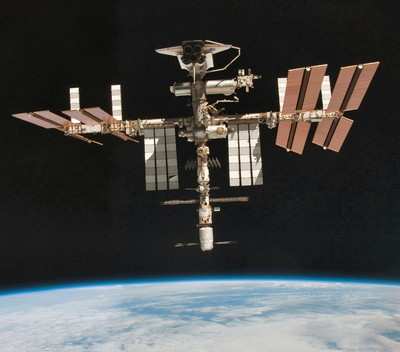Mon, Nov 12, 2012
Educational Rover Controlled From ISS
NASA and the European Space Agency (ESA) successfully have used an experimental version of interplanetary Internet to control an educational rover from the International Space Station. The experiment used NASA's Disruption Tolerant Networking (DTN) protocol to transmit messages and demonstrate technology that one day may enable Internet-like communications with space vehicles and support habitats or infrastructure on another planet.

Space station Expedition 33 commander Sunita Williams in late October used a NASA-developed laptop to remotely drive a small LEGO robot at the European Space Operations Center in Darmstadt, Germany. The European-led experiment used NASA's DTN to simulate a scenario in which an astronaut in a vehicle orbiting a planetary body controls a robotic rover on the planet's surface.
"The demonstration showed the feasibility of using a new communications infrastructure to send commands to a surface robot from an orbiting spacecraft and receive images and data back from the robot," said Badri Younes, deputy associate administrator for space communications and navigation at NASA Headquarters in Washington. "The experimental DTN we've tested from the space station may one day be used by humans on a spacecraft in orbit around Mars to operate robots on the surface, or from Earth using orbiting satellites as relay stations."
The DTN architecture is a new communications technology that enables standardized communications similar to the Internet to function over long distances and through time delays associated with on-orbit or deep space spacecraft or robotic systems. The core of the DTN suite is the Bundle Protocol (BP), which is roughly equivalent to the Internet Protocol (IP) that serves as the core of the Internet on Earth. While IP assumes a continuous end-to-end data path exists between the user and a remote space system, DTN accounts for disconnections and errors. In DTN, data move through the network "hop-by-hop." While waiting for the next link to become connected, bundles are temporarily stored and then forwarded to the next node when the link becomes available.
NASA's work on DTN is part of the agency's Space Communication and Navigation (SCaN) Program. SCaN coordinates multiple space communications networks and network support functions to regulate, maintain and grow NASA's space communications and navigation capabilities in support of the agency's space missions.
The space station also serves as a platform for research focused on human health and exploration, technology testing for enabling future exploration, research in basic life and physical sciences and Earth and space science.
More News
Takeoff Roll The process whereby an aircraft is aligned with the runway centerline and the aircraft is moving with the intent to take off. For helicopters, this pertains to the act>[...]
“We’re proud of the hard work that went into receiving this validation, and it will be a welcome relief to our customers in the European Union. We couldn’t be mor>[...]
"Aircraft Spruce is pleased to announce the acquisition of the parts distribution operations of Wag-Aero. Wag-Aero was founded in the 1960’s by Dick and Bobbie Wagner in the >[...]
IDENT Feature The special feature in the Air Traffic Control Radar Beacon System (ATCRBS) equipment. It is used to immediately distinguish one displayed beacon target from other be>[...]
Aero Linx: Pararescue Air Force Pararescuemen, also known as PJs, are the only DoD elite combat forces specifically organized, trained, equipped, and postured to conduct full spect>[...]
 ANN's Daily Aero-Term (05.10.24): Takeoff Roll
ANN's Daily Aero-Term (05.10.24): Takeoff Roll Aero-News: Quote of the Day (05.10.24)
Aero-News: Quote of the Day (05.10.24) Aero-News: Quote of the Day (05.11.24)
Aero-News: Quote of the Day (05.11.24) ANN's Daily Aero-Term (05.11.24): IDENT Feature
ANN's Daily Aero-Term (05.11.24): IDENT Feature ANN's Daily Aero-Linx (05.11.24)
ANN's Daily Aero-Linx (05.11.24)



